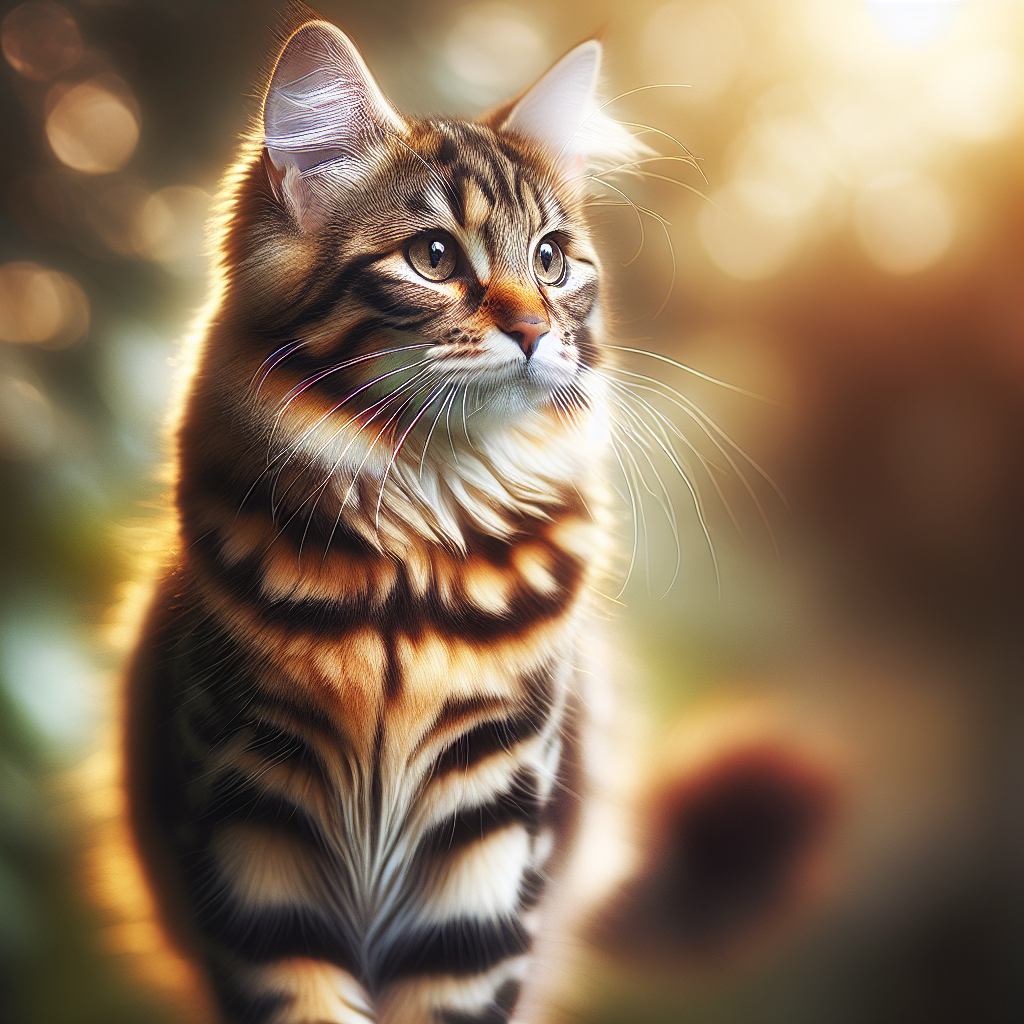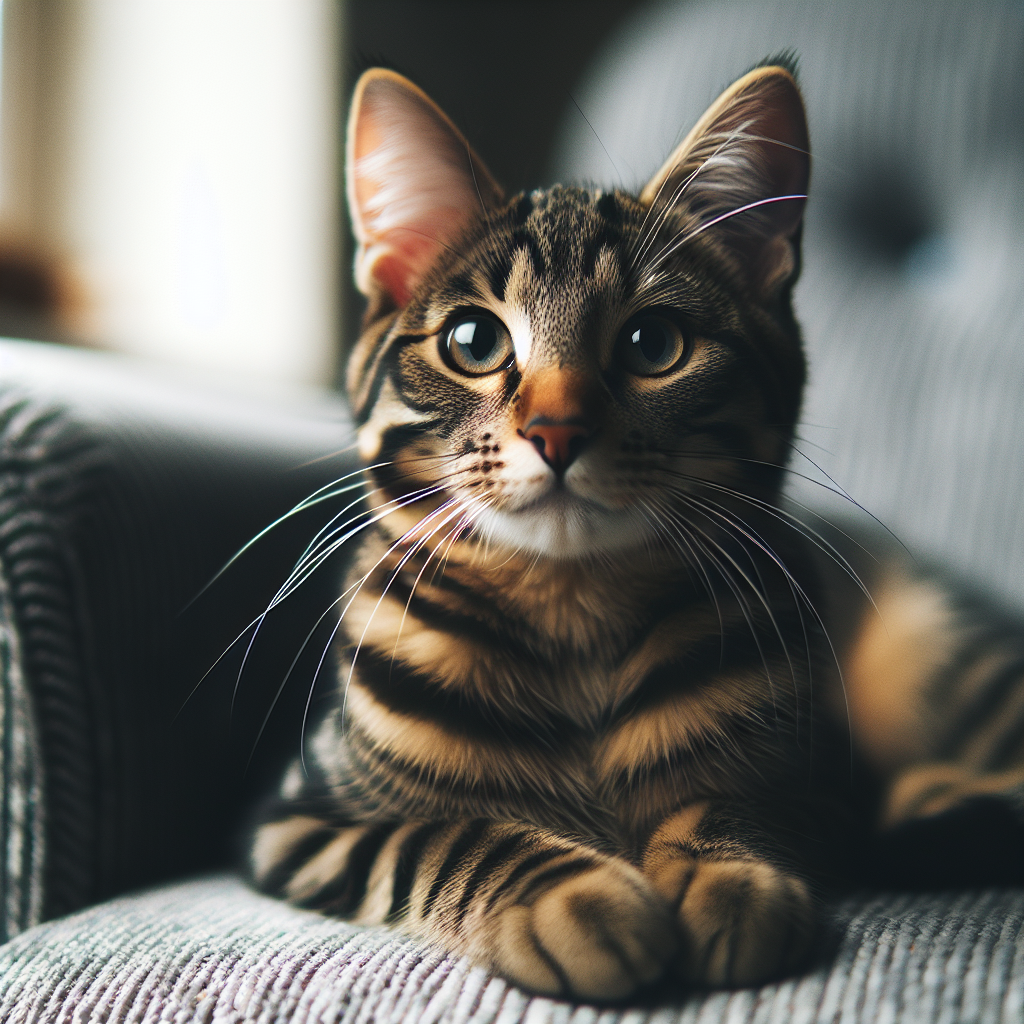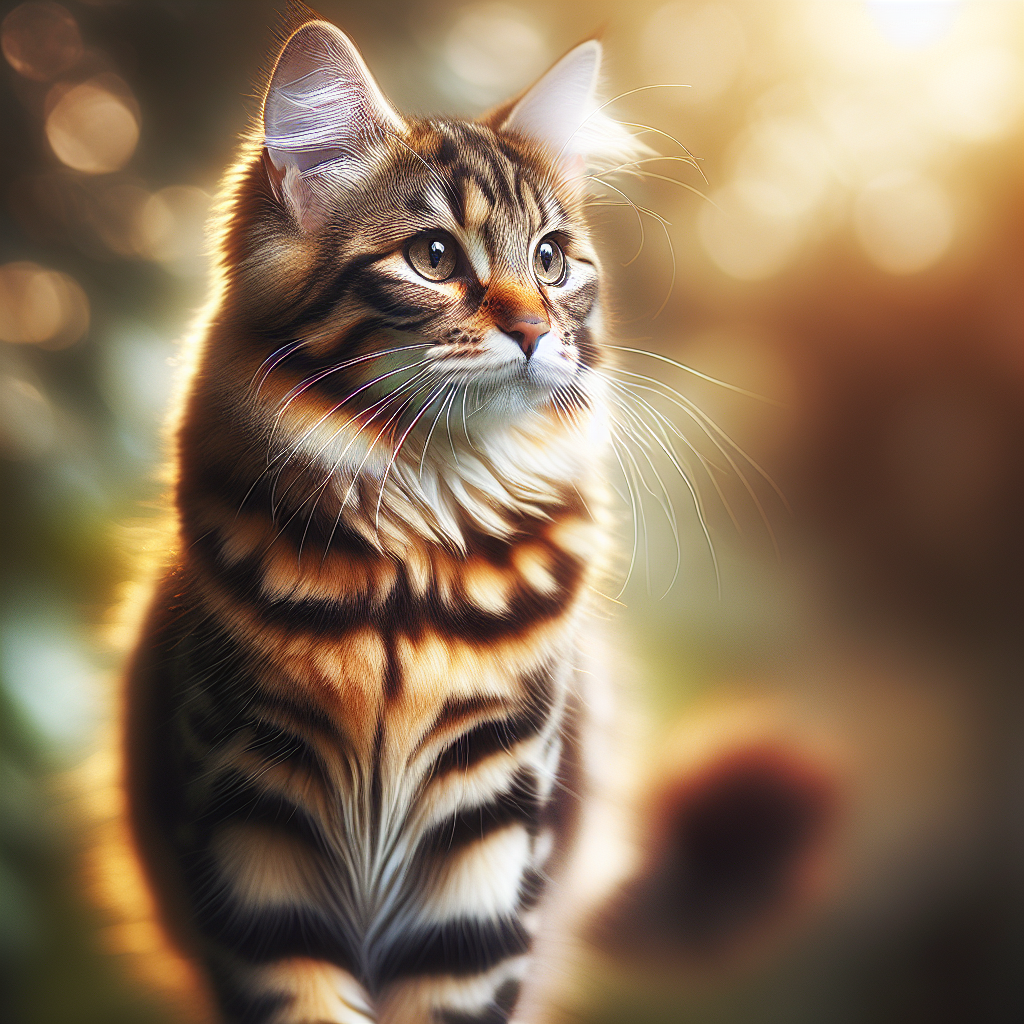So, you’ve probably heard the term “tabby cat” thrown around and wondered – is a tabby cat considered a breed? Well, the answer might surprise you. Contrary to popular belief, “tabby” is not actually a breed of cat, but rather a coat pattern that can be found in various breeds. While tabby cats are undoubtedly adorable with their distinctive striped or spotted coats, they come in many different shapes and sizes, making them a diverse and fascinating group of felines. Let’s delve into the world of tabby cats and discover what makes them so special.

What is a Tabby Cat?
A tabby cat is not a specific breed of cat, but rather a coat pattern that is commonly seen in domestic cats. The term “tabby” refers to the distinct markings and patterns on the cat’s fur, rather than to a particular breed or lineage. Tabby cats can vary greatly in terms of their physical characteristics, personality traits, and genetic background.
Physical characteristics
Tabby cats come in a wide range of sizes and body types, depending on their genetic background. They can be found in both short-haired and long-haired varieties, with different fur textures and lengths. In terms of appearance, tabby cats typically have a distinct “M” pattern on their foreheads, along with stripes or spots on their bodies. Their fur can come in various colors, including brown, gray, orange, and cream.
Personality traits
In terms of personality, tabby cats are known for their friendly and affectionate nature. They tend to be social and outgoing, and they often enjoy interacting with their human companions. Tabby cats are frequently described as being playful, curious, and intelligent. They can also be quite independent and may exhibit a strong sense of curiosity and exploration. Overall, tabby cats are well-loved for their combination of beauty and personality.
Types of Tabby Patterns
Tabby cats can exhibit different patterns on their fur, with each pattern having its own unique characteristics. Here are some of the most common tabby patterns:
Classic Tabby
The classic tabby pattern is also known as the “blotched” tabby pattern. Cats with this pattern have bold, swirling lines or patches of color on their fur, creating a marbled appearance. The classic tabby pattern can be seen on both the body and tail of the cat, and it often includes a distinctive “bull’s eye” marking on the sides.
Mackerel Tabby
The mackerel tabby pattern is characterized by narrow, parallel stripes that run vertically along the cat’s body. These stripes resemble the patterning seen on fish, which is where the name “mackerel” comes from. Mackerel tabbies typically have a striped pattern on their tail and legs as well.
Spotted Tabby
As the name suggests, spotted tabbies have spots instead of stripes on their fur. These spots can vary in size and shape, and are typically distributed randomly across the cat’s body. Spotted tabbies can have a combination of solid spots, rosettes, or even a leopard-like pattern.
Patched Tabby
Patched tabbies, also known as tortoiseshell tabbies, have a unique pattern that consists of different colored patches on their fur. These patches can be a combination of tabby patterns, such as classic, mackerel, or spotted. Patched tabbies often have a distinct “patchwork” appearance with a mixture of colors.
Ticked Tabby
The ticked tabby pattern is characterized by fur that is evenly colored along each individual hair shaft. This gives the fur a speckled or “peppered” appearance. Ticked tabbies typically have a lighter color on the base of their fur, with darker bands of color near the tips. This pattern is commonly seen in breeds such as the Abyssinian and the Somali.
Tabby Cats and Genetics
While tabby cats may not be a specific breed, their coat patterns are influenced by genetics. Understanding the genetics behind tabby patterns can help shed light on why certain patterns appear in certain cats.
The ‘Tabby’ Gene
The tabby gene is responsible for creating the distinctive markings and patterns seen in tabby cats. This gene controls the production of pigments in the hair follicles and determines the distribution of these pigments on the fur. The tabby gene comes in dominant and recessive forms, with the dominant form being responsible for tabby patterns.
Inheritance of Tabby Patterns
The inheritance of tabby patterns can be complex, as it is influenced by multiple genes. The tabby gene can interact with other genes that control coat color and pattern, resulting in a wide range of tabby patterns and variations. The specific combination of genes inherited from the parents determines the pattern seen in the offspring. This is why some cats may exhibit more prominent tabby patterns, while others may have a more subtle or diluted appearance.
Is a Tabby Cat Considered a Breed?
While tabby cats are not considered a specific breed, they can be found in many different breeds and breed variations. To understand the distinction, it is important to clarify what constitutes a breed and how tabby cats fit into this classification.
Understanding Cat Breeds
A cat breed refers to a group of cats that share similar physical characteristics, temperament, and genetic makeup. Breeds are typically established through selective breeding over many generations to create cats with desired traits and appearances. Different cat breeds are recognized and regulated by various cat registries and associations around the world.
Definition of a Breed
To be considered a breed, a group of cats must have a consistent and predictable appearance and genetic background. This means that the cats within the breed should have similar physical attributes, coat patterns, and personality traits. Breed standards are set by cat registries and associations, and cats that meet these standards can be registered as purebreds within their respective breed.
Purebred vs. Mixed Breed
Purebred cats are those that come from a specific breed and have a known pedigree. They have been selectively bred to maintain specific traits and characteristics over time. Mixed breed cats, on the other hand, come from various genetic backgrounds and may not have a specific or predictable appearance or temperament.
Tabby Cats and Breeds
Tabby cats can be found in numerous cat breeds and breed variations. Many breeds have tabby varieties, which means that certain breeds can exhibit tabby patterns while still maintaining the breed’s distinct features. Examples of cat breeds that can have tabby varieties include the American Shorthair, Maine Coon, Bengal, Exotic Shorthair, British Shorthair, Norwegian Forest Cat, Siberian, Turkish Van, and Oriental Shorthair.

Cat Breeds with Tabby Varieties
Tabby cats are not limited to mixed breeds and can be seen in various recognized cat breeds. Here are some examples of cat breeds that commonly have tabby varieties:
American Shorthair
The American Shorthair breed is known for its diversity in coat patterns, including tabby patterns. American Shorthair tabbies can have classic, mackerel, or spotted patterns, and come in various colors.
Maine Coon
Maine Coons are a popular breed with tabby varieties. They often exhibit the classic tabby pattern or variations of it, such as the patched tabby pattern. Maine Coons are known for their large size, tufted ears, and bushy tails.
Bengal
The Bengal breed is famous for its wild and exotic appearance, which includes a distinctive spotted tabby pattern reminiscent of a leopard. Bengals have a sleek and muscular build, and their coat colors can range from brown to silver.
Exotic Shorthair
Exotic Shorthairs are known for their resemblance to the Persian breed, but with a shorter coat. This breed can also have tabby varieties, with classic tabby and mackerel tabby patterns being common.
British Shorthair
British Shorthairs are a well-known breed that often comes in solid colors, but tabby patterns can also be found in this breed. Classic tabby and spotted tabby variations can be seen in British Shorthairs, showcasing their distinctive round faces and dense coats.
Norwegian Forest Cat
Norwegian Forest Cats are a breed known for their long, thick fur and tufted ears. They can have tabby patterns, with classic tabby and mackerel tabby being the most common. Norwegian Forest Cats are often associated with their native Norway and their ability to withstand cold weather.
Siberian
Siberians are a breed with a reputation for being hypoallergenic, making them popular among cat lovers with allergies. This breed can also have tabby patterning, including classic tabby and mackerel tabby patterns.
Turkish Van
Turkish Vans are a breed known for their unusual love of water. While they are often associated with their distinct color pattern, which involves a mostly white coat, they can also have tabby patterns in different colors.
Oriental Shorthair
The Oriental Shorthair breed is known for its sleek and slender body type, as well as its wide variety of coat colors and patterns. Tabby patterns, including the classic, mackerel, and spotted variations, can be seen in Oriental Shorthairs.
Distinguishing Traits of Tabby Cats
Tabby cats possess several distinguishing traits that set them apart from other cats. These traits contribute to their unique charm and make them easily recognizable.
Distinct Look
Tabby cats have a distinctive appearance that is characterized by their coat patterns. Whether it’s the bold swirls of the classic tabby or the spotted markings of the spotted tabby, these patterns make tabby cats stand out from the crowd.
Wide Range of Colors
In addition to their various coat patterns, tabby cats come in a wide range of colors. From the classic brown and black tabbies to the more exotic silver and blue tabbies, there is a tabby cat for every color preference.
Ticked Fur
One of the unique traits seen in tabby cats is the ticked fur pattern. Instead of having distinct stripes or spots, ticked tabbies have fur that is evenly colored along each individual hair shaft. This gives their fur a speckled appearance and adds to their overall beauty.
Agouti Pattern
The agouti pattern, also known as the “salt and pepper” pattern, is a characteristic of many tabby cats. It involves each hair having bands of different colors, giving the fur a subtle blending effect. This creates a lovely texture and depth to the coat.
Whorls and Swirls
Tabby cats often have interesting whorls and swirls in their coat patterns. These patterns can be found on the face, body, and tail, and add to the uniqueness and individuality of each tabby cat. No two tabbies are exactly alike, and their swirls and whorls are like beautiful, natural works of art.
Tabby Cats in Popular Culture
Tabby cats have made their mark in popular culture and have been featured in various forms of media and literature. Here are some examples of famous tabby cats and their appearances in popular culture.
Famous Tabby Cats
One of the most famous tabby cats in popular culture is Garfield. Created by Jim Davis, Garfield is a lovable and lazy orange tabby known for his sarcastic wit and love of lasagna. Garfield’s popularity has made him an iconic tabby cat character loved by people of all ages.
Another famous tabby cat is Bob the Street Cat, who gained fame through the book “A Street Cat Named Bob” written by James Bowen. This heartwarming true story tells the tale of James Bowen’s transformational relationship with a stray tabby cat named Bob.
Tabbies in Media and Literature
Tabby cats have been featured in numerous movies, TV shows, and books. From the animated character Thomas O’Malley in Disney’s “The Aristocats” to the Cheshire Cat in Lewis Carroll’s “Alice’s Adventures in Wonderland,” tabby cats have left their paw prints on our imagination and continue to be beloved characters in various forms of entertainment.
Tabby Cats as Pets
Tabby cats make wonderful companions and are well-suited to becoming part of your family. Their adaptability and temperament are some of the reasons why they are favored as pets.
Adaptability and Temperament
Tabby cats are known for their adaptability, which makes them well-suited for indoor or outdoor living. They can adjust well to different environments, whether it be a small apartment or a spacious home. Additionally, tabby cats are generally easy-going and have a friendly nature, making them great companions for individuals, families, and other pets.
Care and Maintenance
Like all cats, tabby cats require proper care and maintenance. This includes providing a balanced diet, regular grooming to keep their coats healthy and free from tangles, and scheduling routine veterinary check-ups. Tabby cats also benefit from mental and physical stimulation, such as playtime and interactive toys, to keep them entertained and happy.
The Popularity of Tabby Cats
Tabby cats are incredibly popular and can be found in many households around the world. Their commonness and ubiquity contribute to their appeal as beloved pets.
Commonness and Ubiquity
Tabby cats are among the most commonly found cats worldwide due to their genetic prevalence. This means that tabby patterns occur frequently in cat populations, making them a familiar and easily recognizable sight. Their prevalence has contributed to their popularity among cat lovers everywhere.
Misconceptions about Tabby Cats
Despite their popularity, tabby cats are sometimes subject to misconceptions. Some people mistakenly believe that tabby cats are a specific breed, when in fact they are a coat pattern found in various cat breeds and mixed breeds. Additionally, some individuals may associate tabby cats with certain behavioral traits or superstitions, which are not based on scientific evidence.
Conclusion
In conclusion, tabby cats are not a breed, but rather a distinctive coat pattern seen in domestic cats. With their unique physical characteristics, ranging from the classic tabby to the ticked tabby, tabby cats are easily recognizable and well-loved by cat enthusiasts. While tabby patterns are influenced by genetics, tabby cats can be found in various cat breeds, adding to their diversity and charm. Their adaptability, friendly personality, and wide range of colors and patterns make tabby cats popular pets. Whether they are featured in popular culture or cherished as part of a family, tabby cats hold a special place in our hearts as beloved companions.

